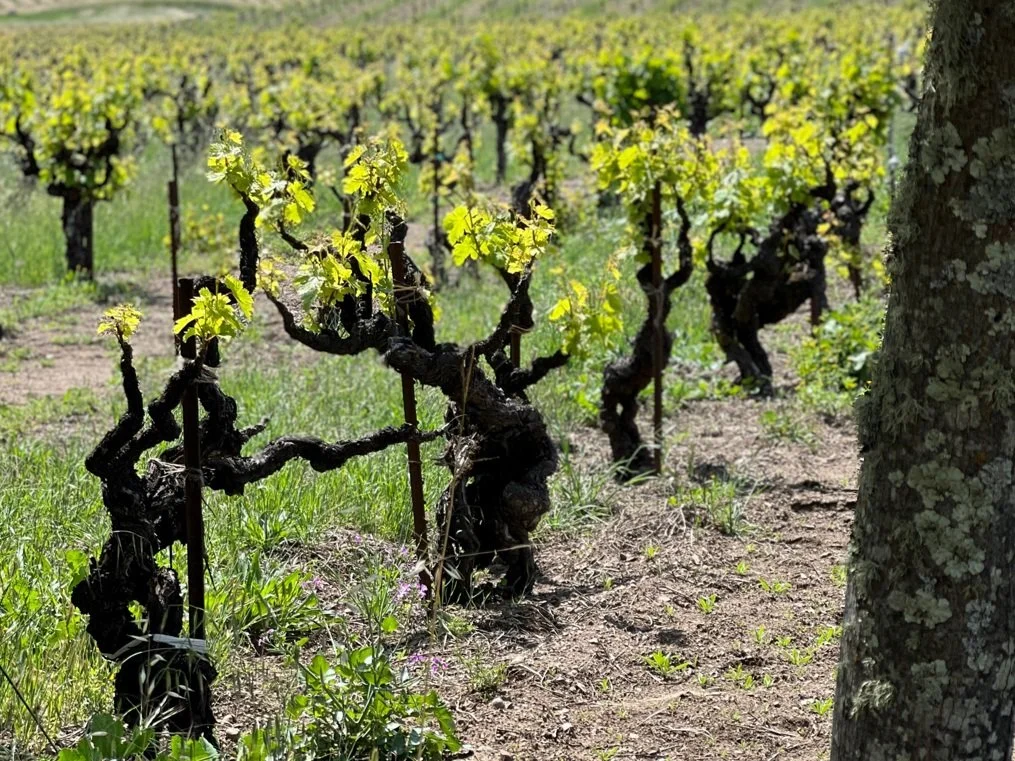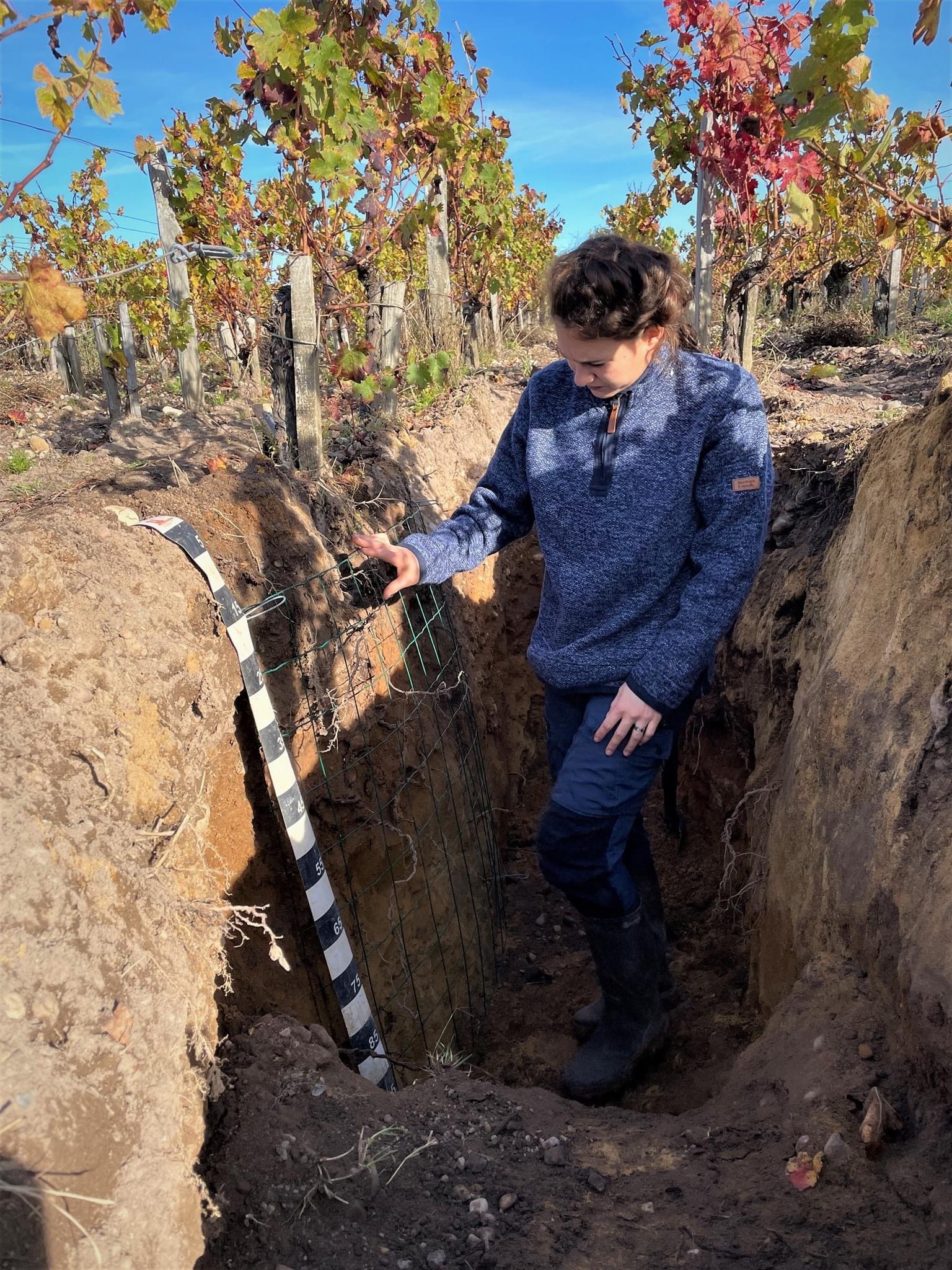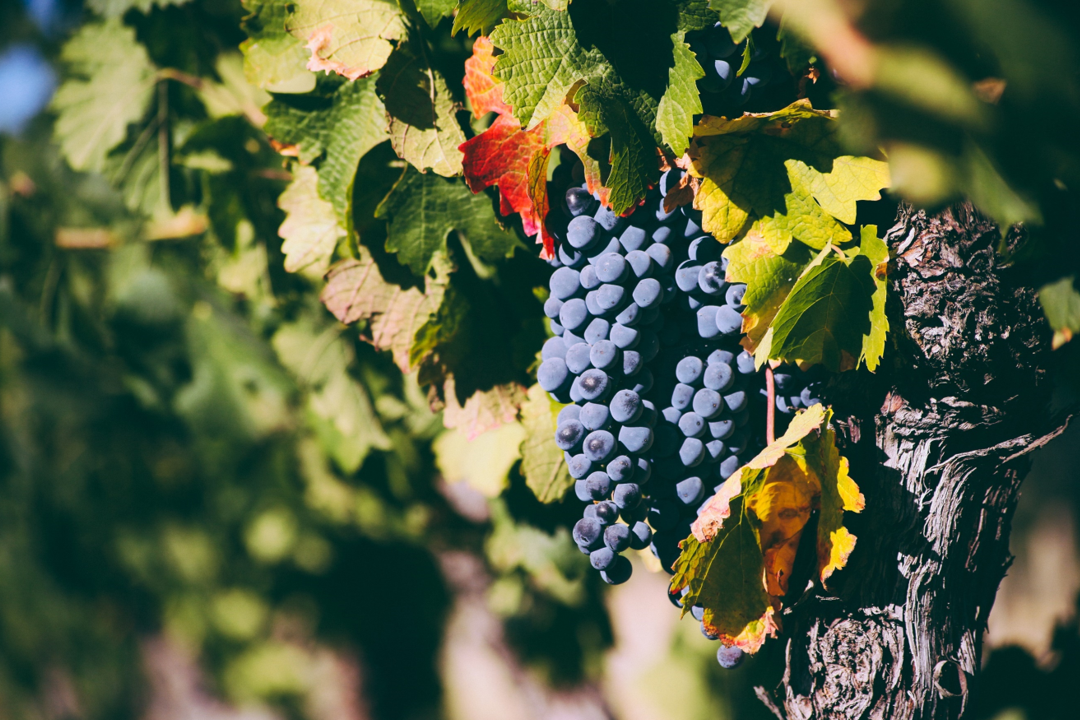Discover the Uniqueness of Old Vines 領略老藤的獨特魅力
老藤,是每個資深葡萄酒愛好者都十分熟悉的葡萄酒詞彙。無論是法語vielle vignes,或英語的old vines,只要葡萄酒標有這樣的字眼就必然要支付更高的價錢,但即便如此消費者還是很樂意地去做。
老藤獨特的風味和少有的產量既能為消費者帶來味覺上的滿足,也能因為產量的稀缺性帶來心裡的滿足。但這兩點還不足以解釋為何老藤能使消費者如此的著迷,接下來我們深入地認識一下老藤的獨特之處。
要認識老藤的與眾不同我們要從植物生態學去了解葡萄樹的生態構造。
1- 葡萄樹的根部從地下吸收養分為整棵植株提供必須的生長物質
2- 葡萄樹在光合作用下,經過第一階段的動能轉化和第二階段的卡爾文循環轉換成葡萄糖, 最後以澱粉質和氮化物的形式儲存在根部
3- 透過葉子的蒸騰作用,營養汁液由韌皮部管(樹幹)傳送到葡萄樹的生長部分(芽、葉、果實)
知道了葡萄樹的生態學構造後,我們就來領略老藤特有的優勢和能夠生產出風味獨特的葡萄酒的原因。
老藤的根部系統更發達。葡萄樹的根部系統分為三大組成部分:主根、側根和永久根。主根負責快速地生長向深層的土壤伸展,隨後會生長出很多側根負責不斷的水平向外和垂直伸展。在這個擴展過程中,大部分側根會死亡但同時也會長出新的側根。而沒有死亡的側根就會形成永久根,構成根部系統的結構骨架。
葡萄樹成年以後,它們的主根一般到達地下30-35cm就會停止生長,有些會達到50cm左右而側根就不斷的橫向發展,因此老藤的根部系統延伸的面積範圍更大,但不會比成年葡萄樹紮根得更深。而老藤發達的根部系統讓葡萄樹抵抗疾病和自然災害的能力增加,也為葡萄果實提供更穩定充足的營養物質輸送。
注:15-50cm的是葡萄樹紮根的最佳深度, <15cm容易受到土地乾旱的影響, 和耕地,松土的破壞。>50cm溫度太低,而且還會遇到岩石層,不利於根部的生長。
老藤的糖分儲備更多。年輕葡萄樹,它的葉子處於一個快速成長的階段,光合作用強度會因為樹葉的面積增加而增加,但與此同時樹葉數量的增加會造成擁擠遮蔭,減少了日照面積從而造成光合作用下降。而老藤葡萄樹因經歷了無數次的修剪,無論在葉子的數量上還是芽的數量上都得到了人為的控制而沒有了擁擠遮蔭的問題,並能更好的進行光合作用。在同等條件下,老藤的LA/F指標比一般葡萄樹更好。而且老藤所需要的基本新陳代謝能量更小,能夠儲備的糖份(澱粉質)就會更多。
此外,在冬季期間有更充足的糖分儲備還能穩定地為葡萄樹提供能量用作維持必須的代謝活動,老藤的防霜凍能力也就更好。
注:LA/F(葉面面積/果實質量), LA/F能夠直接反應能量和有機碳供應和需求之間的關係,是衡量葡萄果實質量的一個度量指標。
老藤的抗疾病能力更強。豐富的糖分儲備可以使葡萄樹的細胞保持更高的活力,這是葡萄樹抵抗疾病和自然災害的核心。
老藤的果實成熟更有規律。蒸騰作用的強度取決於光線強度,根部水分供應條件。在面對極端天氣的時候,由於老藤的根部系統更發達,更分散,更有利於吸收土壤的水分,維持穩定的營養物質傳遞。一旦遇上酷熱天氣,年輕的葡萄樹則會因為土壤乾燥而導致蒸騰作用減少甚至停止,養分也就不能傳送到果實。
Domaine Armand Rousseau在一級園Clos Saint Jacques,為一片40年以上老藤葡萄園重新種植了新的幼苗
老藤賦予了一款葡萄酒獨特的風格,讓人十分著迷,但我們也要知道老藤從來不是高品質的保證。酒農也不是簡單地認為樹齡越大越好,而是需要在產量和風格之間找到好的平衡。有的酒莊當葡萄樹達到40年左右就會重新種植新的葡萄樹來獲取更高的產量,而有些酒莊則會繼續精心照顧著超過一個半世紀的葡萄園。 例如德國的Zehnthof Luckert酒莊就擁有一片驚人的超級老藤Sylvaner葡萄園這片葡萄園可以追溯到1870年,期間幸運地逃過了19世紀末的根留蚜蟲侵襲,樹齡平均達到140年。從這葡萄園釀造出來的Creutz Sylvaner除了極低的年產量(600瓶)還擁有難以置信的質感和驚人的複雜度讓你的味蕾穿越時空回到一個半世紀前領略一番根留蚜蟲病前的德國風土。
詳情可以參考 https://www.vynluna.com/current-offers/collectible-german-rarity-from-140-years-old-ungrafted-vines
注:老藤並沒有一個法定的劃分,按照植物生態學劃分一般為: 葡萄樹幼苗<3年 ; 年輕葡萄樹7-10年; 成年葡萄樹10-30年; 老藤 >30年。
Old vines is a word that is familiar to all wine lovers. Whether it's vielle vignes in French, or old vines in English, if a wine has this word on it, it will inevitably cost more, but even so, consumers will happily pay for it.
The unique flavor and rare production of old vines bring both taste and heart satisfaction to the consumer due to the scarcity of production. But these two points are not enough to explain why old vines is so fascinating to consumers, so let's take a closer look at what makes old vines so unique.
To understand the difference of old vines we have to look at the ecology of the vine from a phytological perspective.
1- The roots of the vine absorb nutrients from the ground to provide the whole plant with the necessary growth material
2- Under photosynthesis, the grapevine undergoes the first stage of kinetic energy conversion and the second stage of the Calvin cycle to glucose, which is finally stored in the roots in the form of starch and nitrogen compounds
3- Through the transpiration of the leaves, the nutrient sap is transported from the phloem (trunk) to the growing parts of the vine (buds, leaves, fruit)
Now that we understand the ecology of the vine, we will look at the unique advantages of old vines, and the reasons why it produces wines of exceptional flavor.
The root system is more developed in old vines. The root system of the vine is divided into three main components: the main root, the lateral roots, and the permanent roots. The main root is responsible for the rapid growth of the vine into the deeper layers of the soil, followed by the growth of many lateral roots which are responsible for the continuous horizontal and vertical extension. During this process, most of the lateral roots die but at the same time new lateral roots grow. The lateral roots that do not die form permanent roots, which form the structural skeleton of the root system.
As vines reach adulthood, their main roots usually stop growing when they reach 30-35cm below ground, with some reaching 50cm and lateral roots developing laterally. The developed root system of the old vine increases the vine's resistance to disease and natural hazards and provides a more stable and adequate supply of nutrients to the vines.
Note: 15-50cm is the optimum depth for vine rooting, <15cm is susceptible to drought and damage from ploughing and loosening of the soil. >50cm is too cold and will also encounter rocky ground, which is not conducive to root growth.
Old vines have more glucose reserves. In young vines, the leaves are growing rapidly and the intensity of photosynthesis increases as the leaves increase in size, but at the same time, the increase in the number of leaves causes shade congestion, reducing the area of sunlight and thus reducing photosynthesis. Old vines, on the other hand, have been pruned numerous times and the number of leaves and buds has been artificially controlled to allow better photosynthesis without the problem of overcrowding and shading. Under the same conditions, the LA/F index of the old vines is better than that of the average vine. Older vines also require less basic metabolic energy and can reserve more glucose (starch).
In addition to this, more glucose reserves during the winter months provide the vines with a steady supply of energy to maintain the necessary metabolic activities, and the vines are more resistant to frost.
Note: LA/F (leaf area/fruit quality), LA/F is a direct response to the relationship between energy and organic carbon supply and demand, and is a measure of grape fruit quality...
Old vines are more resistant to disease. The rich reserves of glucose keep the vine's cells more vigorous, which is at the heart of the vine's resistance to disease and natural hazards.
Fruit ripening is more regular in old vines. The intensity of transpiration depends on the intensity of light and the availability of water to the roots. In extreme weather, the root system of the old vines is more developed, more dispersed, and more conducive to absorbing water from the soil and maintaining a steady transfer of nutrients. In hot weather, the young vine's evapotranspiration is reduced or even stopped due to the dryness of the soil, and nutrients cannot be delivered to the fruit.
Domaine Armand Rousseau replanted new vines in a Premier Cru at Clos Saint Jacques, a vineyard over 40 years old
Old vines give a wine a unique style that is fascinating, but it is also important to understand that old vines are never a guarantee of quality. When considering vineyards, it is not simply a matter of thinking that the older the vine the better, but that farmers need to find a good balance between yield and style. Some wineries replant new vines when they reach 40 years of age to obtain higher yields, while others continue to care for their vines for more than a century and a half. The Zehnthof Luckert winery in Germany has an amazing old vineyard of Sylvaner, dating back to 1870, which was lucky enough to escape the phylloxera attack at the end of the 19th century and has an average age of 140 years. In addition to the extremely low annual production of 600 bottles, this Creutz Sylvaner has an incredible texture and amazing complexity that will transport your taste buds back in time to a pre-phylloxera German terroir a century and a half ago.
For more details, see here: https://www.vynluna.com/current-offers/collectible-german-rarity-from-140-years-old-ungrafted-vines
Note: There is no legal classification for old vines, which are generally classified according to botanical ecology as: seedlings <3 years old; young vines 7-10 years old; adult vines 10-30 years old; old vines >30 years old.





